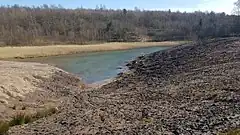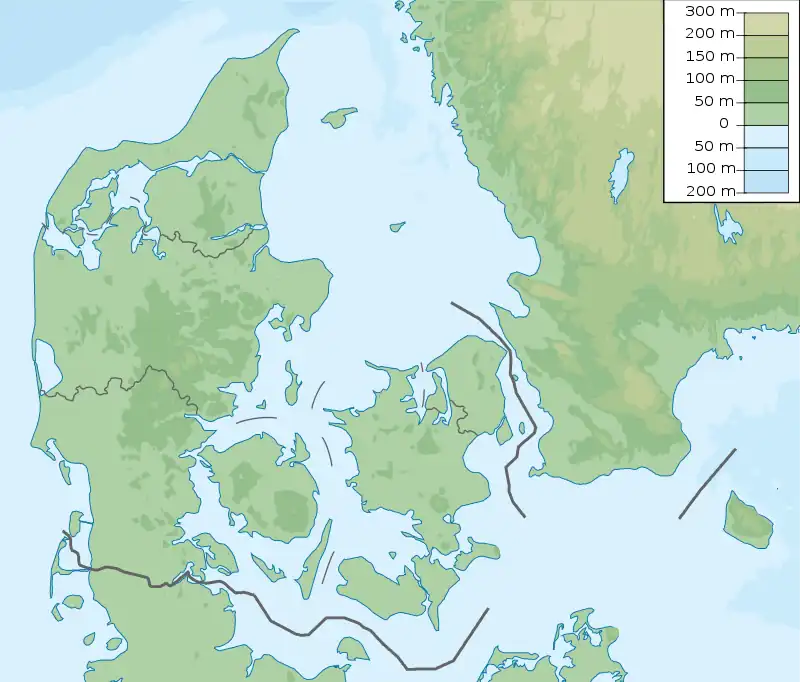| Gram Formation | |
|---|---|
| Stratigraphic range: Tortonian ~ | |
 Gram Clay Pit, the prime source of fossils from the Gram Formation | |
| Type | Formation |
| Lithology | |
| Primary | Claystone |
| Location | |
| Coordinates | 55°18′N 9°06′E / 55.3°N 9.1°E |
| Approximate paleocoordinates | 55°36′N 8°06′E / 55.6°N 8.1°E |
| Region | Jutland |
| Country | |
| Type section | |
| Named for | Gram |
 Gram Formation (Denmark) | |
The Gram Formation is a geological formation in Gram, Denmark. It preserves fossils dating from the Miocene period. The formation consists of three layers: the glauconite-rich, the Gram Clay, and the Gram sand. The sediments in the formation were deposited in an open marine depositional environment known as the Gram Sea.
Fossil content
Many fossils of new species have been discovered in the formation, including those of the beaked-whale Dagonodum mojnum[1] and the mollusk species Pseudocochlespira gramensis,[2] as well as specimens of better-known species such as Carcharodon megalodon.[3]
See also
References
- ↑ Ramassamy, Benjamin; Lauridsen, Henrik (October 2019). "A new specimen of Ziphiidae (Cetacea, Odontoceti) from the late Miocene of Denmark with morphological evidence for suction feeding behaviour". Royal Society Open Science. 6 (10): 191347. Bibcode:2019RSOS....691347R. doi:10.1098/rsos.191347. PMC 6837206. PMID 31824732.
- ↑ http://natuurtijdschriften.nl/download?type=document&docid=674554%5B%5D%5B%5D
- ↑ Almgreen, S. E. Bendix (15 November 1983). "Carcharodon megalodon from the Upper Miocene of Denmark, with comments on elasmobranch tooth enameloid: coronoïn". Bulletin of the Geological Society of Denmark. 32: 1–32. CiteSeerX 10.1.1.514.1782. doi:10.37570/bgsd-1983-32-01. S2CID 53311833. NAID 10012345550.
This article is issued from Wikipedia. The text is licensed under Creative Commons - Attribution - Sharealike. Additional terms may apply for the media files.